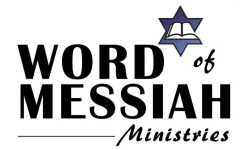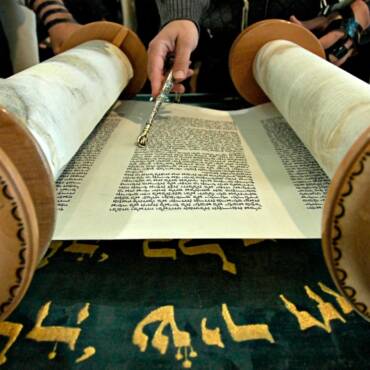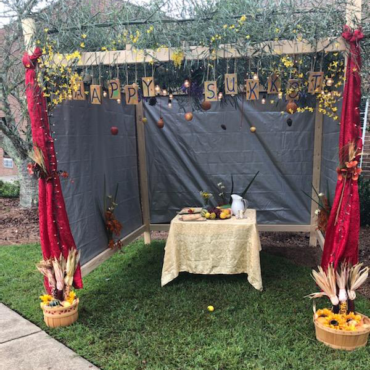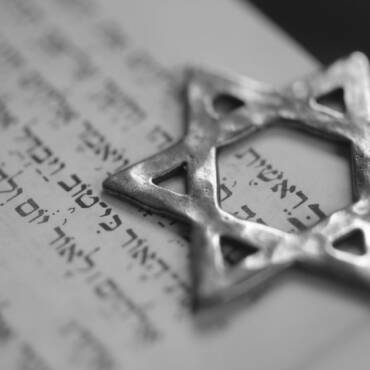Messiah and the Red Heifer Purification: Redeemed by a Direct Line of Sight – Numbers 19:3-4
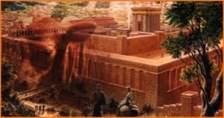
By Sam Nadler
Then the LORD spoke to Moses and Aaron, saying, 2 “This is the statute of the law which the LORD has commanded, saying, ‘Speak to the sons of Israel that they bring you an unblemished red heifer in which is no defect and on which a yoke has never been placed. 3 ‘You shall give it to Eleazar the priest, and it shall be brought outside the camp and be slaughtered in his presence. 4 ‘Next Eleazar the priest shall take some of its blood with his finger and sprinkle its blood seven times directly before the Tabernacle.’”
The parashah is on Parah Adumah, the Red Heifer purification and on the importance of the Heifer’s blood sprinkled by the cohen directly toward the Tabernacle (or Temple) door. The Red Heifer, along with all biblical executions (Numbers 15:35-36), were reckoned as accursed by G-d, and were therefore judged “outside the camp” and on a sightline to the Tabernacle (Temple) door, so to be conducted “before the Lord” (Talmud, Yoma 42b).
Israel must be a holy people serving Adonai in holiness. So, though a cause for mockery in modern society, the blood atonement for sin was crucial for ancient Israel, and intrinsic throughout the Hebrew Scriptures (and, so also, throughout the New Covenant). When the walls of the Holy Temple in Jerusalem were built and later rebuilt, several facts made the Red Heifer purification a foreshadowing of Messiah’s atoning death, as noted in the New Covenant (Hebrews 13:12-14).
I. A direct line of sight was required by the Torah: “sprinkle its blood seven times directly before the Tabernacle”
The Red Heifer’s blood was sprinkled 7x from outside the camp and toward the Mikdash about 3000 feet away, or 10 football fields away! So the text adds an additional phrase el-nokach, which translates “directly before the tabernacle” that is, aimed carefully toward the door, the altar, and to Adonai.
A. The word required for the Red Heifer purification: It had to be so directly sprinkled that it’s noted (Mishnah Parah 4:2 & Talmud, Menachoth 27b), if it was not sprinkled directly on a direct line of sight with the Holy of Holies, the whole ceremony was invalid, and there’d be no purification of sins!
B. The worthy reason for the Red Heifer perspective: For though we are so far away, when we direct our attention to the Lord through the prescribed blood sacrifice, we are “before the Lord” and in His sight, and this is our genuine act of worship and not just a mere religious ceremony.
II. A direct line of sight was realized at the Temple
The Mt. of Olives was designated for the Red Heifer purification, and the Jerusalem walls were designed for the Red Heifer perspective. Since the Temple faced east, it took place east of Jerusalem 3000 ft away (& 255 ft higher) on the Mt. of Olives (Mishnah, Middot 1:3). Thus, Mt Zion, 2510 ft., Mt Moriah 2428 ft. east and up –> Mt. of Olives, 2,683 ft. Since the Red Heifer sacrifice had to be in a direct line with the Holy Place, a ramp was built to the appointed altar on the Mt. of Olives. The red heifer was taken there for sacrifice. Mishnah, Middot 2:4: “All the walls of the temple were high except the eastern wall, so that the priest who burnt the red heifer might, while standing on the top of the Mount of Olives, by directing his gaze, carefully see the door of the Temple at the time of the sprinkling of the blood.”
III. A direct line of sight is redemptive in the Messiah
All Torah is about the Mashiach: Talmud, Berachot 34b, “All the prophets prophesied only for the days of the Messiah.” Talmud, Sanhedrin 98b, “The world was created only for Messiah.”
A. The religious accusation in Messiah’s death: Though the Romans cared little where they murdered people, when Judea’s religious leaders insisted that Yeshua be executed on the charge of “blasphemy” (Matthew 26:65-66;
John 19:7), it necessitated His crucifixion be on the Mt. of Olives, at the place of executions called “the Place of Stoning that was nearby burnt sin offerings” (Sanhedrin 42b) and it was on a direct line of sight with the Temple door.
B. The redemptive sightline of Messiah’s death: The place of Messiah’s execution on the Mt. of Olives, was by the altar of the Red Heifer, as well as at the place of the stoning and on direct line of sight to the Temple and the sprinkling of the blood of the sacrifices.
C. The realized significance of Messiah’s death: In the darkness, when Yeshua died, the great Temple veil tore (Matthew 27:50-51) …and the great light of the Menorah in the Holy Place shone through that darkness. This was seen by all of the people that were at Yeshua’s death, for they were on a direct sight line with the Temple. Thus in Matthew 27:54, when the centurion, and those with him who were guarding Yeshua, saw the earthquake and all that had happened, they were awestruck, saying, “Surely He was the Son of G-d!“
Jewish tradition notes that there were previously nine red heifers in Israel’s past (Mishnah Para 3:5), but that “the Messiah would furnish the tenth Red Heifer” (Shu’aib, Hukkat 88c, The Legends of the Jews). But in fact, it’s not that the Messiah would furnish the final Red Heifer purification, but that He Himself would fulfill the Red Heifer purification role for Israel! Yeshua the Messiah fulfills and therefore forgives! Thus, “For the bodies of those animals whose blood is brought into the holy place by the high priest as an offering for sin, are burned outside the camp. Therefore, Yeshua also, that He might sanctify the people through His own blood, suffered outside the gate.”
(Hebrews 13:11-12)
IV. A direct line of sight is received by the Believer
A. We receive directly from Yeshua’s death for our eternal salvation
And if these be the facts, and they are, it continues, “So, let us go out to Him outside the camp, bearing His reproach” (Hebrews 13:13). In going to Him, we now repent of our rejection of Him and directly identify and trust in Yeshua as the Messiah of Israel.
Holy G-d’s wrath on sin –>Yeshua, our Red Heifer purification <– Our faith in G-d’s provision for sin.
This atonement of Messiah was promised and provided to all with a direct line of sight to Him as Zechariah 12:10 predicted: “I will pour out on the house of David and on the inhabitants of Jerusalem, the Spirit of grace and of supplication, so that they will look on Me whom they have pierced; and they will mourn for Him, as one mourns for an only son, and they will weep bitterly over Him like the bitter weeping over a firstborn.”
B. We receive directly from Yeshua’s life for our everyday success! That is, if we abide in Him, looking to Him as we live out our daily lives, even as Hebrews 12:1-2 encourages us, “Let us run the race that is set before us with endurance, looking to Yeshua, the Author and Finisher of our faith…consider Him who has endured such hostility by sinners against Himself, so that you will not grow weary and lose heart.”
